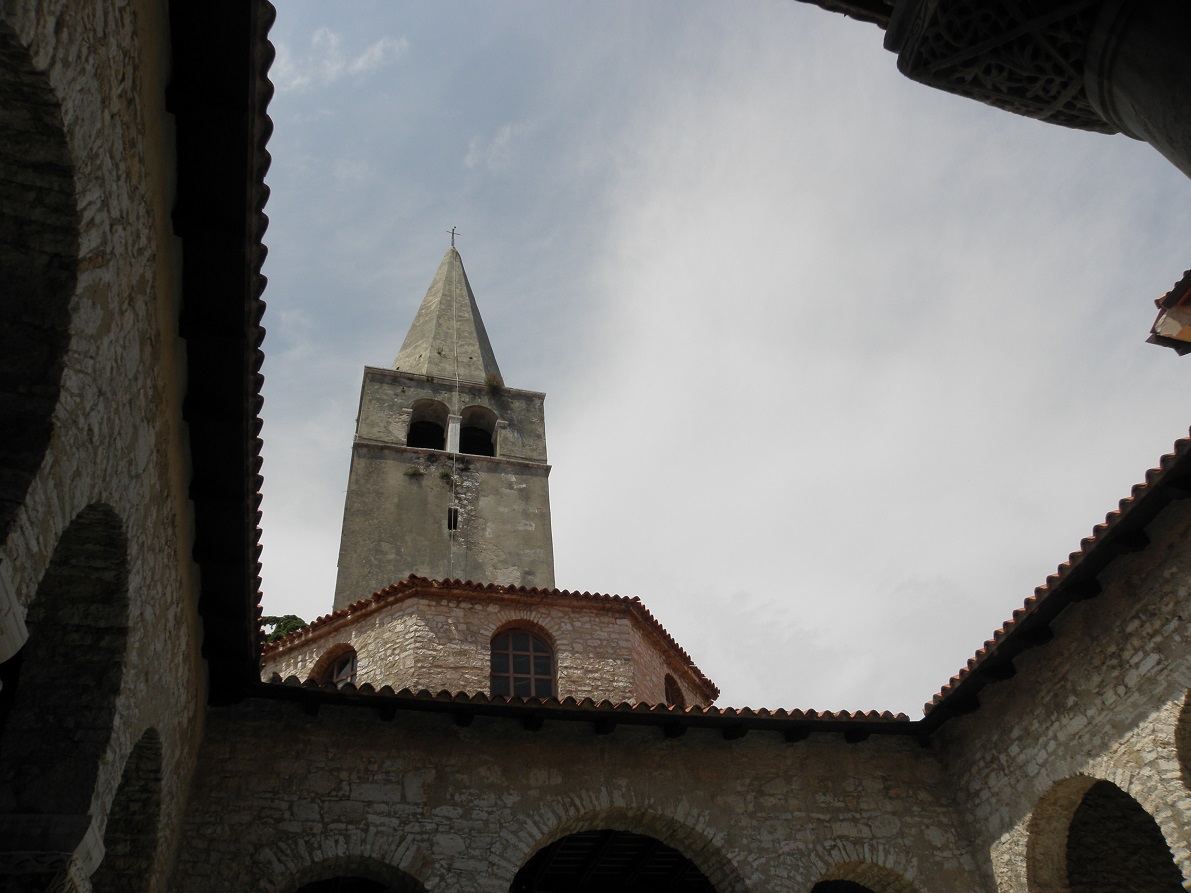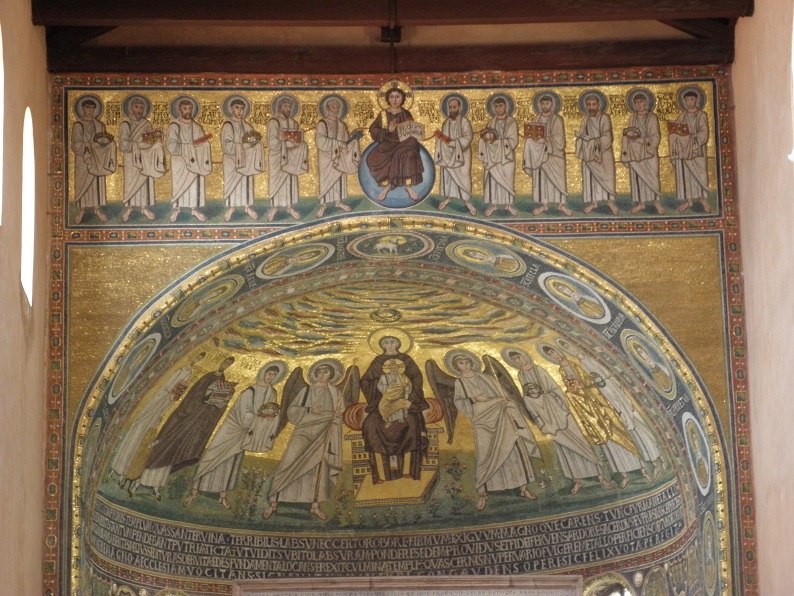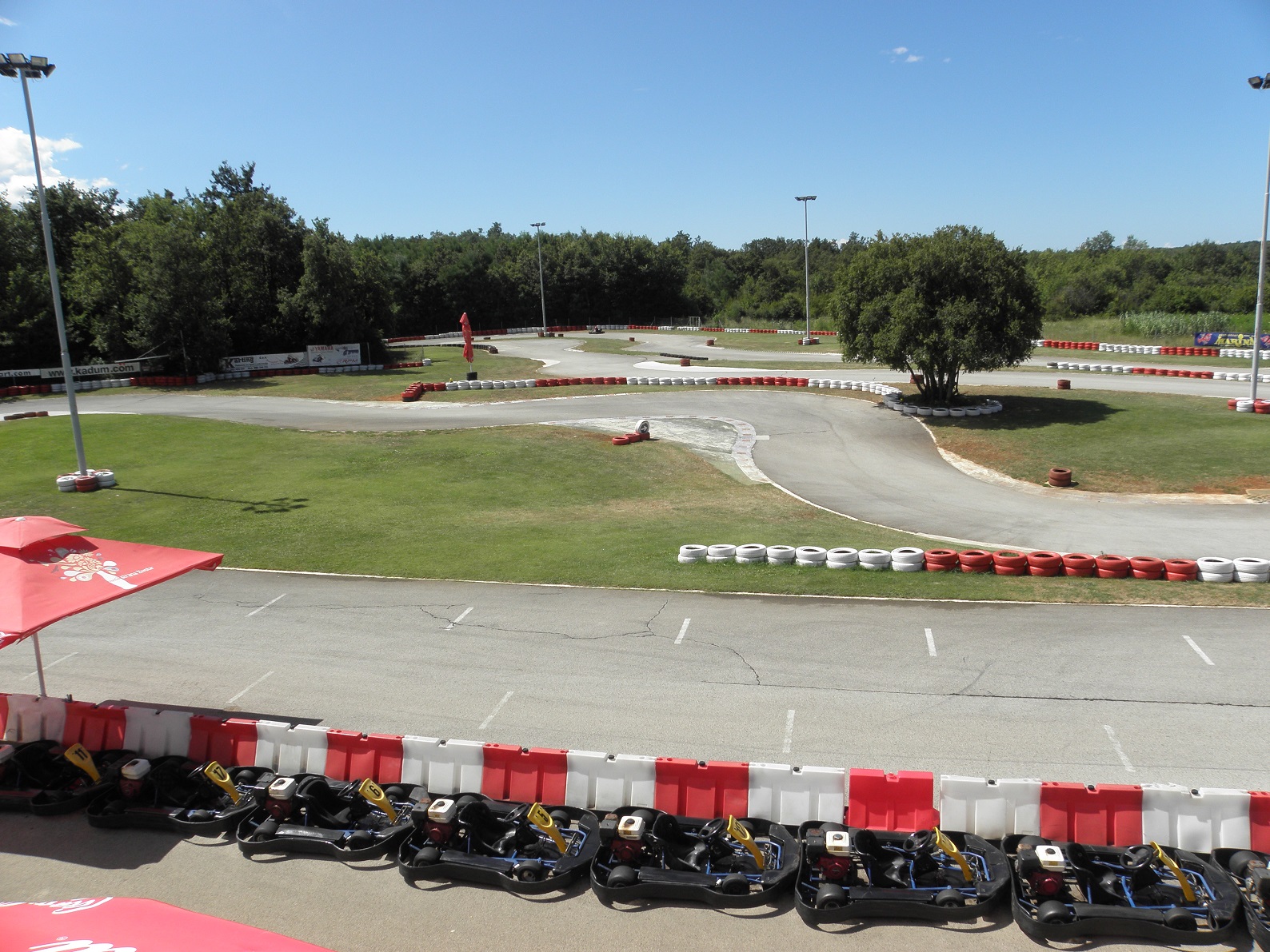Croatian Professor Livija Puljak among Researchers with Highest Citation Impact in 2019
ZAGREB, 21 February, 2021 - Researcher Livia Puljak, a full professor at the Zagreb-based Catholic University of Croatia (HKS), was among two percent of scientists with the highest citation impact worldwide in 2019, the HKS recently reported.
The findings of the survey "Updated science-wide author databases of standardized citation indicators" show that apart from Puljak, 46 other researchers and professors from Croatian universities and institutes were in the group of scientists with a significant citation impact in 2019.
The "Updated science-wide author databases of standardized citation indicators" paper, authored by John P. A. Ioannidis, Kevin W. Boyack and Jeroen Baas of Stanford University, analyses not only the number of citations but some other factors concerning citation rates and citation indexes for 160,000 researchers.
Puljak, 43, who heads the Croatian Catholic University's Center for Evidence-Based Medicine and Healthcare, said that it was great to be in the group of researchers with the highest citation impact.
Puljak earned a PhD at the University of Split School of Medicine in 2008.
Tokyo Olympics: Croatia Draws Group B with Serbia, Montenegro
February 21, 2021 - Croatia draws Group B with Serbia, Montenegro, and more top national teams at the Olympic Games in Tokyo this summer.
After a thrilling end to the Olympic qualifying tournament in Rotterdam on Sunday, Croatia secured the final 12th spot for the Tokyo Olympics.
Recall, Croatia and Russia met in the 3rd-place match of the Olympic qualifying tournament on Sunday afternoon. A win was enough for Croatia to automatically secure a spot in Tokyo, as the top three national teams from the qualifiers advance to the Olympic Games.
Croatia finished the tournament with six victories and two defeats. Croatia won their first match against Romania at 16:6, defeated the Netherlands 25:8, topped France 10:13, lost to Russia 13:14, and beat Germany 22:8 in the final group stage match.
Croatia thus finished the group stage with eight points, four wins, and a defeat against Russia, which finished first with nine points.
In the quarterfinal match on Friday, Croatia was better than Georgia (15:6), but lost to Montenegro in the semifinal match on penalties on Saturday. In the match for 3rd place, Croatia topped Russia on penalties 25:24.
After Montenegro and Greece met in the final of the qualifiers, the national teams were drawn into two groups, in which Croatia was placed in Group B with Serbia, Australia, Spain, Kazahstan, and Montenegro.
Namely, Croatia is in the company of the World Championship finalist - Spain, the defending Olympic gold medalist and 2019 World League winner - Serbia, the bronze medalist from the last European Championship in Budapest - Montenegro, and Australia, led by Croatian coach Elvis Fatović, the silver medalist from the last FINA Cup and the strongest team outside Europe. The only weaker team in the group is the national team of Kazakhstan.
On the other hand, Group A includes South Africa, the United States, Hungary, Greece, Japan, and Italy.
The top four teams from each group move onto the quarterfinal stage of the competition.
The Olympic Games in Tokyo are scheduled from July 24 to August 8, 2021.
To read more about sport in Croatia, follow TCN's dedicated page.
People Also Ask Google: Is Porec in Croatia Worth Visiting?
February 21, 2021 – Continuing the TCN series answering the questions posed by Google's People Also Ask function. Is Porec in Croatia worth visiting? The shortest answer would be – of course – and here are all the reasons why.
What is Porec like in Croatia?
Located on the west coast of the Istrian peninsula in Croatia, Poreč can most simply be described as a seaside town with many tourist attractions but also with a rich and indispensable cultural history. It is perhaps best known as the home of the Euphrasian Basilica (so-called Euphrasiana) from the 6th century, one of the seven UNESCO's world heritage sites in Croatia.
However, in the last few years, Poreč has been filling newspaper columns as one of the best cities to live in Croatia, which has been contributed to by its economic, cultural, and social development. A famous tourist town that lives throughout the year? It seems like it could be. Since I have been spending almost every summer in Poreč since I was born, I would unquestionably like to get to know it better from the perspective of living in it. Maybe one day, but for now, I will focus on what I know Poreč is worth visiting for.
Historic center: Is Porec in Croatia worth visiting for culture and heritage?
Apart from the aforementioned Euphrasian Basilica, a must-see cultural site to visit, the whole old Poreč city core is a cultural monument. The peninsula on which the old town of Poreč is located hides historic traces dating back thousands of years. The main street that passes through it – Decumanus – is full of tourists in summer due to its numerous shops and restaurants. At the intersection with Cardo Street, the so-called Dekumanova Street reveals several Gothic and Baroque palaces.

The Euphrasian Basilica in Poreč is one of the most beautiful preserved monuments of early Byzantine art in the Mediterranean.
Built in the 6th century during Bishop Euphrasius, after whom it is named, the Euphrasian Basilica is famous for glittering mosaics dating from the 3rd century. The picture shows the Euphrasian Basilica's apse decorated with Byzantine mosaics.
At the entrance to Dekumanova Street from Sloboda Square, attention is drawn to the Pentagonal Tower, at the top of which is a restaurant. At the top of the nearby Round Tower overlooking the waterfront, tourists love to enjoy a cafe.
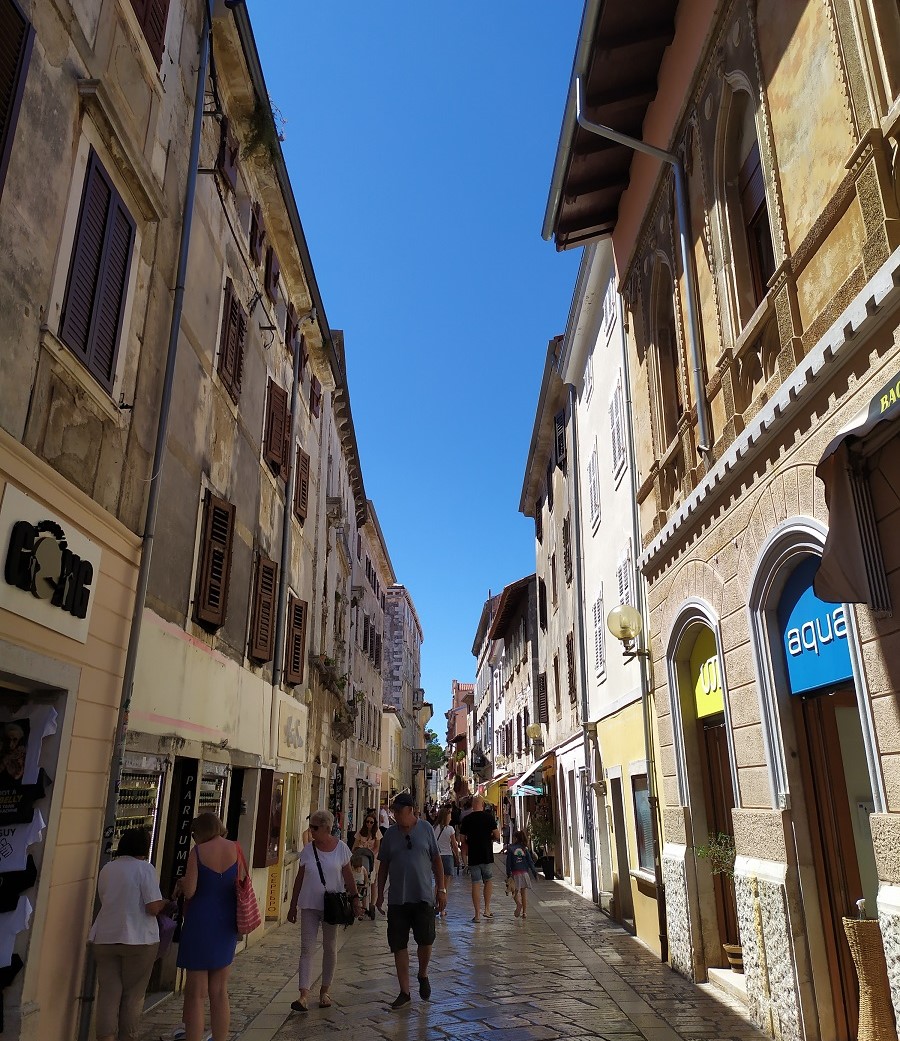
Dekumanova Street / Decumanus Street in Poreč
Evidence of life from ancient times is hidden near the oldest square of Marafor. Also, Poreč is the proud home of the largest Roman shrine in Istria, the Large Temple, and to the north of it are the remains of the Temple of Neptune.
For me, one of the usual evening activities in Poreč is a walk through the old town in the mentioned Decumanus Street, as well as along Poreč's lungomare or Ante Šonja Coast, with a romantic view of the north side of Poreč – Peškera Bay (where the city beach is located), Pical, and Materada. I call it the quiet side because there are no stands on it, for which the other part of the city is famous, just the open sea in front of you, with some lighthouse flashes.
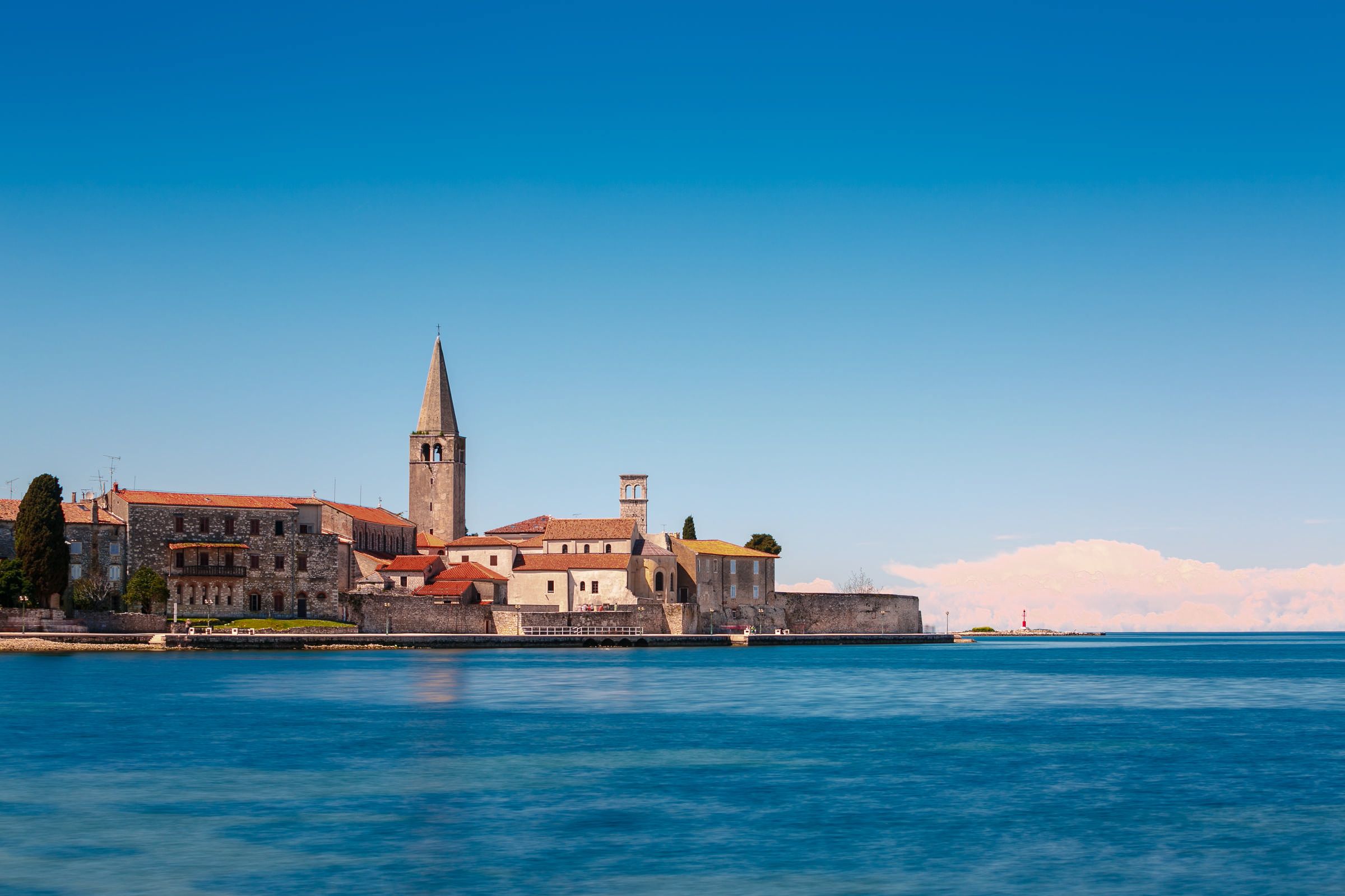
The old town of Poreč and Poreč lungomare / Romulić and Stojčić
I usually continue my walk along the coast to the newly renovated city waterfront, i.e., Marshal Tito's Coast, thus embracing the entire old core of Poreč. I admire numerous yachts, tourist boats, and fishing boats moored in the Poreč port along the waterfront side.
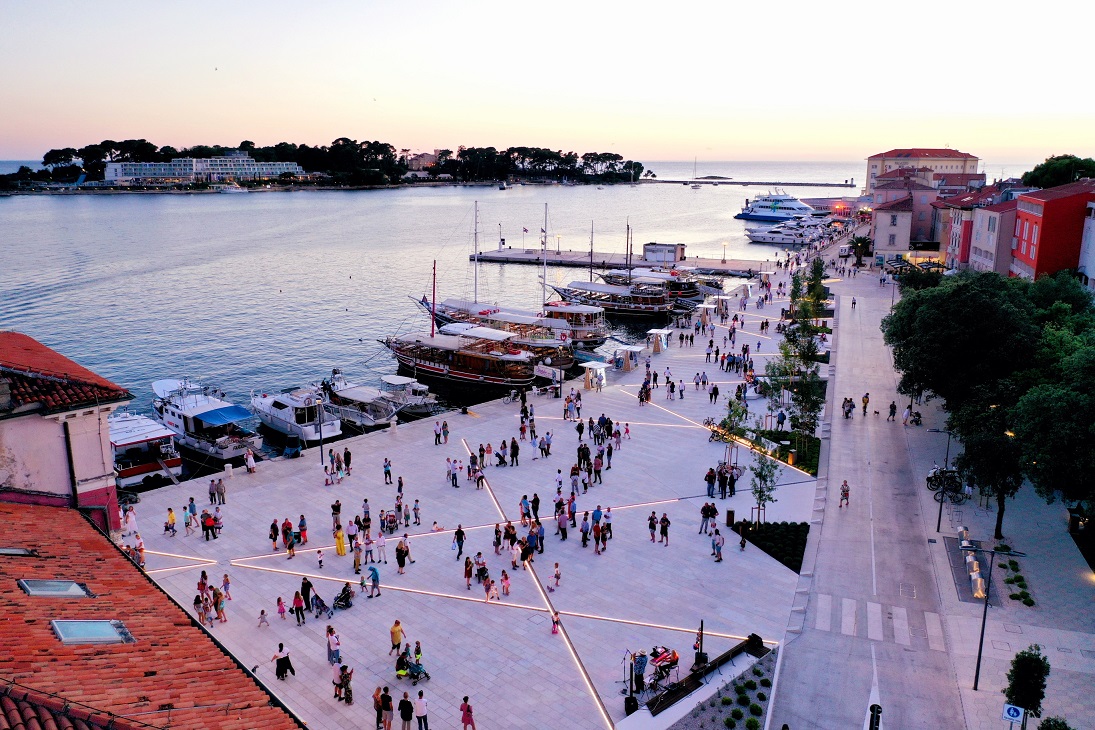
Last year, the Poreč waterfront, an integral part of the Poreč old town, got a new attire – new facilities with signposts to the old town's sights. / Poreč Tourist Board
Is Porec in Croatia worth visiting for beaches and sports activities?
I stayed in Poreč during all stages of my life – from a playful child, through a demanding teenager, to a serious student – and at no time was I bored in Poreč, nor my parents who have been spending their summers in this beautiful Istrian city for almost 30 years. As we are a family that likes a combination of active and lazy holidays, we love Poreč because we get both there – beautiful and clean beaches, as well as many cultural, gourmet, adventure, fun, and sports facilities.
As my all-time favorite activity is rollerblading (and as I'm not a fan of swimming), I enjoy long rides from the center of Poreč along beaches trails. There is a crystal clear sea on one side of the trail, while on the other side, there are various sports and catering facilities. The first beach to reach is Beach Brulo. Located in the mild Mediterranean and sheltered bay, surrounded by pine trees, it is ideal for a real summer vacation.

Brulo Beach / Croatian Tourist Board
The trail along the coast goes all the way to Poreč Blue Lagoon, Green Lagoon, and White Bay, beautiful bays and hotel resorts. I recommend the popular tourist train that goes from the south side of Poreč Riviera! Also, If you like cycling and similar recreation, you will love cycling in Poreč.
As there are pebble, sandy, rocky, and concrete beaches, you will indeed find a beach tailored to your needs in Poreč. In 37 kilometers of the Poreč shore, there are as many as 22 beaches with a Blue Flag, an international symbol of clean sea and landscaped coastline. That is as many as 20 percent of all Blue Flags which flutter along the Croatian coast!
What I always liked about beaches in Poreč are numerous fun activities, such as water sports – pedal boats, canoes, paragliding, banana boats, parasailing, aquapark, and sports facilities such as tennis courts, volleyball courts, and mini-golf.
It is important to emphasize that the City of Poreč works tirelessly to provide access to all cultural facilities to people with disabilities. For example, last year, they carried out an adaptation project in the Euphrasian Basilica, and many beaches have been adapted for people with disabilities.
Our all-time favorite daily activity is visiting the Saint Nicholas island across Poreč, also known as Valamar Isabella Island Resort. In the summer months, the island is connected to the Poreč waterfront by a full-day ferry line. The boat from Poreč to the island goes every thirty minutes in both ways. The boat ride takes only five minutes, and the ticket price is 40 kunas (5,30 euros).
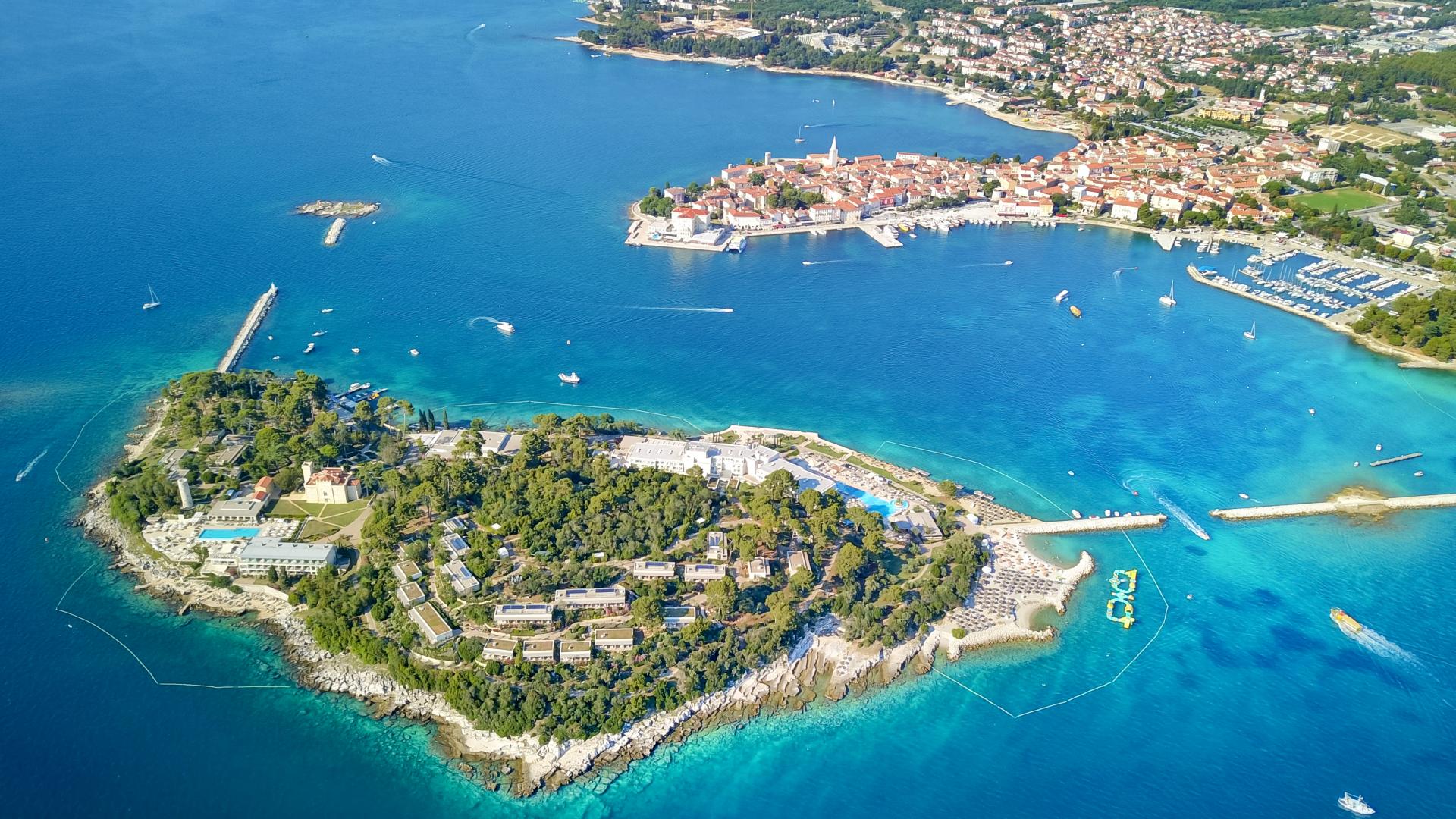
The island of Saint Nicholas in Poreč and Isabella Castle, Valamar Isabella Island Resort / Poreč Tourist Board
I recommend visiting this lovely island across Poreč at least once during your stay to enjoy beautiful, clean, and tidy beaches. It has always been a kind of undiscovered place for my family and me, even before it was renovated by Valamar, the biggest tourism company in Croatia. A nice walk around the island to experience nature's calmness and see the old but now renovated Isabella castle is a must!
On the island and in the whole city, a lot of effort has been put into facilities and activities for children. Along the beaches, you can find numerous children's playgrounds and toboggans. Poreč invests a lot in education, which I witnessed last year when I found out they even have summer tourism workshops for children. Also, children's camps are organized on the beaches, where you can often see many animators with groups of children. There is also a diving school on Brulo Beach.
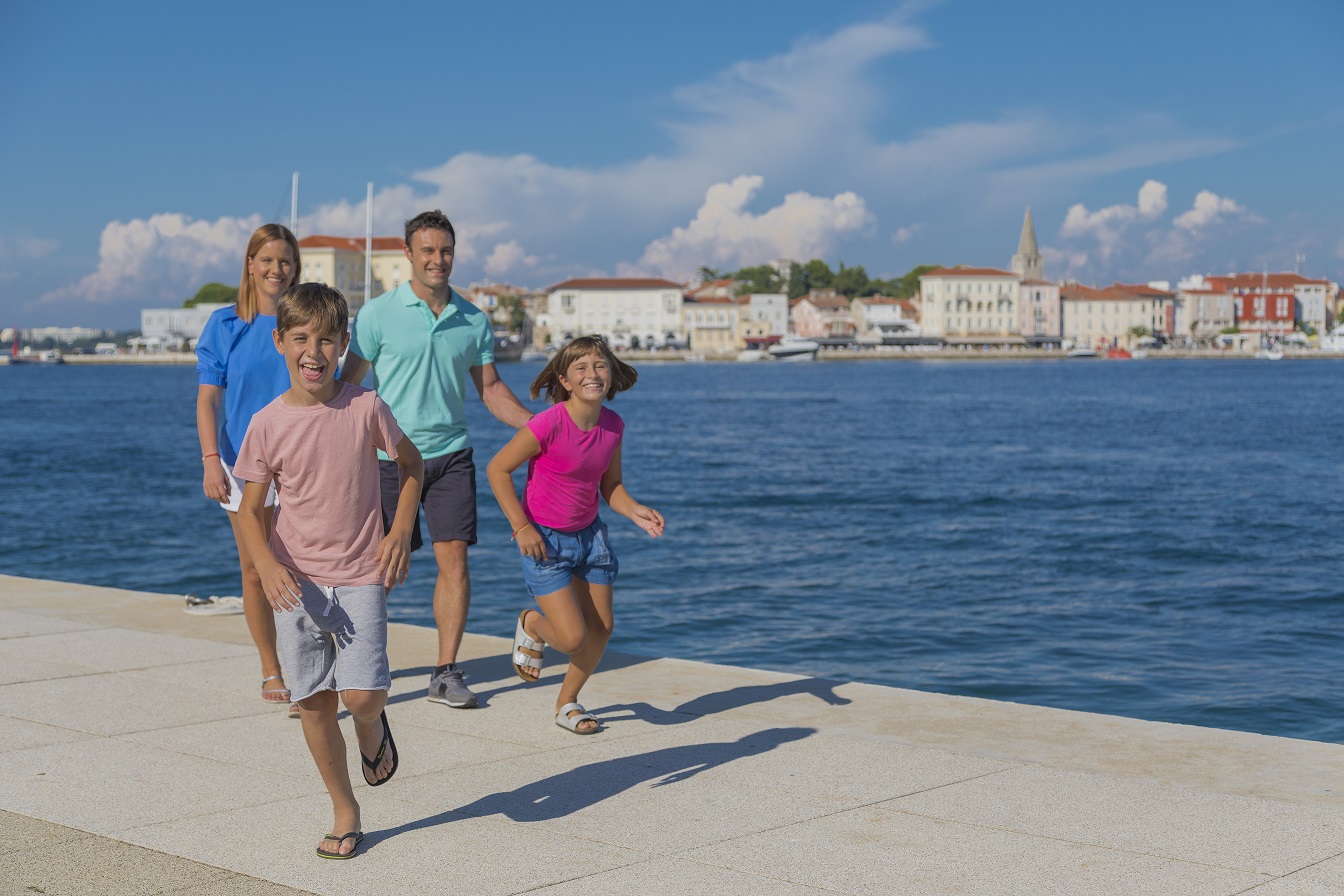
Poreč Tourist Board
Is Porec in Croatia worth visiting for daily boat excursions?
Daily boat excursions from Poreč to surrounding bays and cities are among the most popular activities among tourists. While walking along the waterfront during the evening, when many tourist boats are waiting for their next venture, you can book one-day boat trips to Rovinj, Vrsar, and Lim Fjord, fish picnic trips, and submarine ride. You can also find boats and taxi boats to the nearby Poreč bays, such as Green Lagoon, Blue Lagoon, and White Bay.
One of my earliest travel memories was a one-day trip to Venice from Poreč when I was eight, which I totally recommend. Even though I have seasickness, my first trip to Italy was by boat from Poreč, and I absolutely loved it. Hopping to another country and another city in the middle of your holidays was so exciting back then, and I hope that soon the circumstances will allow the like journeys again.
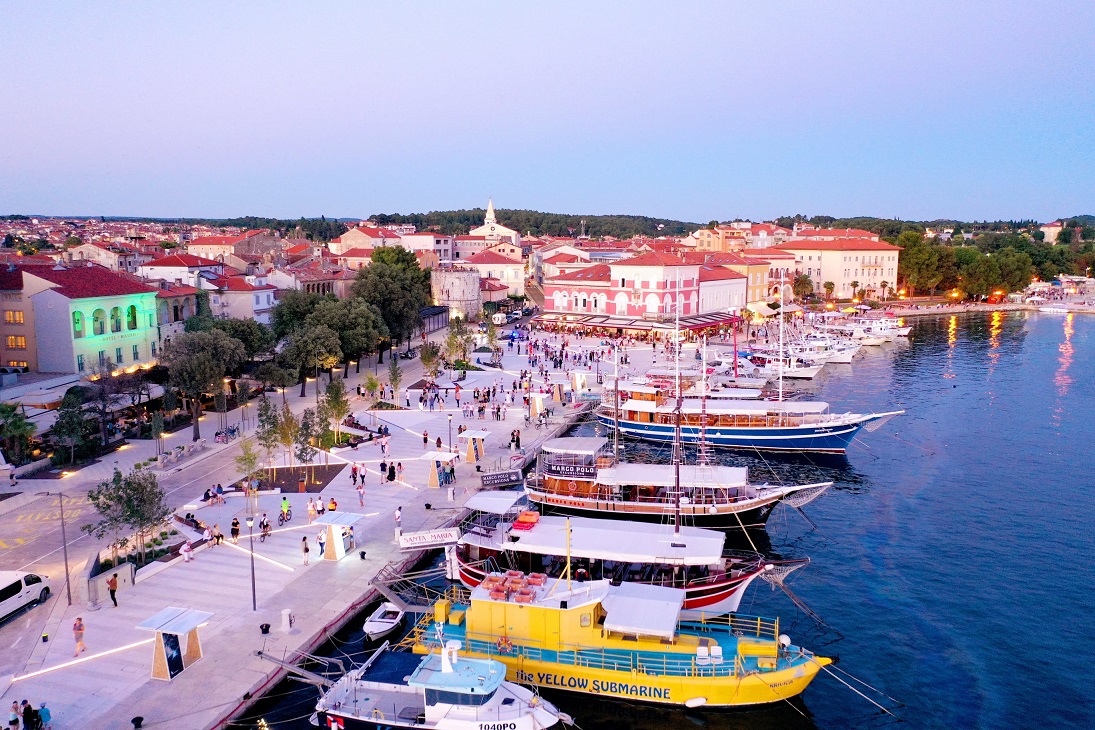
Tourist boats in the Poreč waterfront / Poreč Tourist Board
Is Porec in Croatia worth visiting for nightlife?
Here comes the fun part. During the summer evenings, at the beginning of the city waterfront, you will not be able to miss the sounds of the world's greatest hits and dance rhythms from the famous Poreč club Saint & Sinner.
There is no shortage of night bars and clubs in the city, and the Poreč casino is also popular. Various performers (most often musicians) perform at the summer terraces of hotels and restaurants almost every day. One of the most famous such summer bars is the Lapidarium.
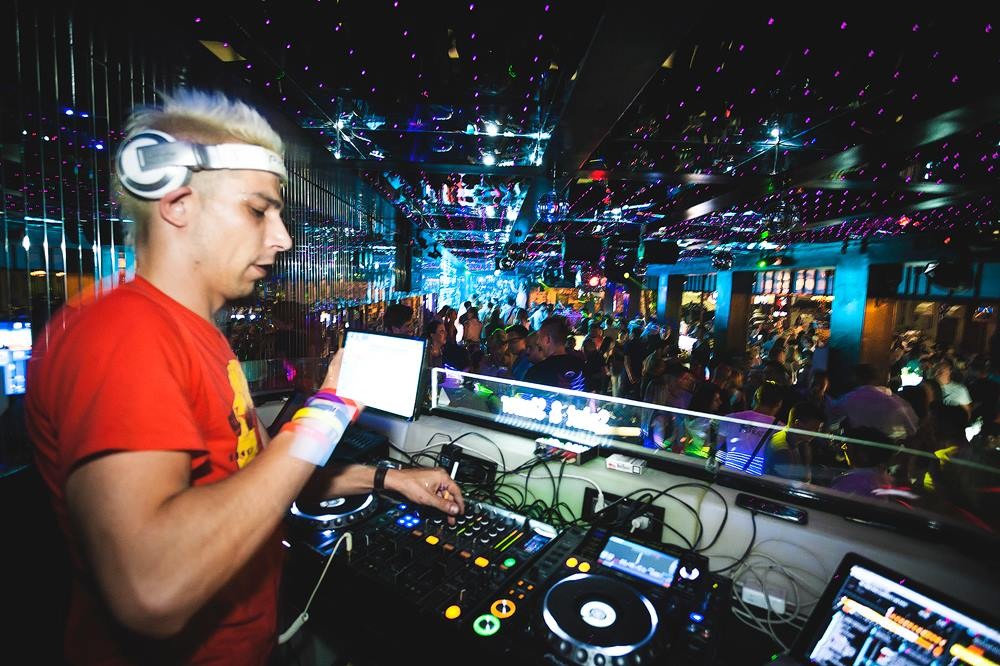
Saint & Sinner / Poreč Tourist Board
At the very top of the Poreč peninsula, at the foot of the Riviera Hotel, music from the attractive Palazzo Club attracts attention. Besides, there are numerous lounge and beach bars by the sea.
I also remember seeing organized transport vehicles around Poreč offering transport services for party people to the nearby famous nightclub Byblos. I'm sure I'm not the only one who is nostalgic about crazy summer parties! Last summer, it was relatively quiet in Poreč, but let's hope for the better in the upcoming summer season.
As for parties, Poreč is also known for hosting Poreč Open Air Festival, an all-summer-long festival that consists of street performances, music nights, cinema, theatre, and special events. The MTV Summerblast in Poreč was also held, but due to the current situation with the coronavirus, the holding of all festivals is uncertain for now.
Is Porec in Croatia worth visiting for gastronomy, adventure, and education?
Although the temperatures in Poreč are high and the sea is warm, I will not lie - almost every year, I experience one rainy day during holidays. However, such days allow me to explore Poreč and its surroundings.
In addition to the many hotels and apartments, many famous restaurants and cafes in Poreč offer only the best Istrian delicacies. Getting to know the local specialties is an indispensable part of getting to know the destination. In Poreč and Istria, those are, among others, truffles, olive oil, Istrian prosciutto, Istrian boškarin beef, asparagus, and seafood, offered in best of Poreč offer. Along the Dekumanova Street in the old city core, you can find many patisseries with ice cream.
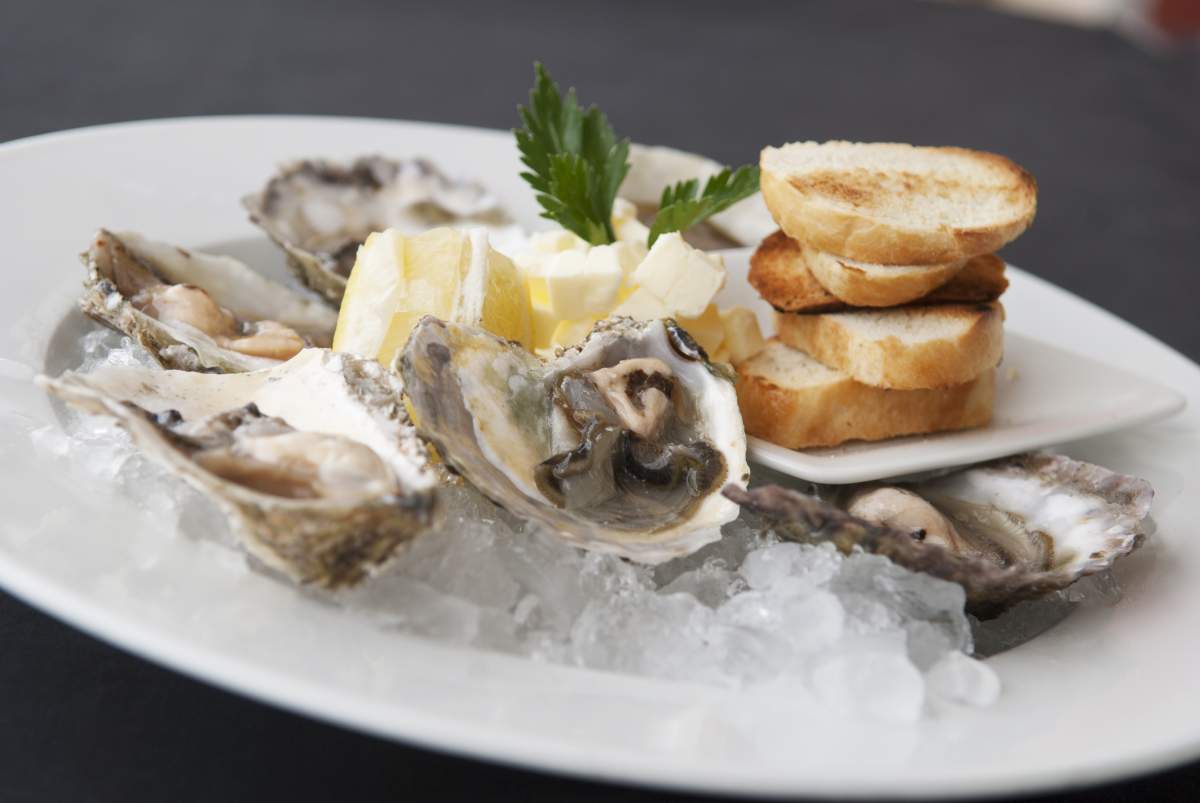
Istrian food - scallops, mussels, oysters / Poreč Tourist Board
I don't have to emphasize the importance and popularity of Istrian wines and wine roads. One must taste them when in Poreč, but what surprised me last year was the favorite activity of Istria people – truffle hunting. It was the best activity for me in the whole visit to Poreč and Istria the previous year, and it is worth experiencing!

As part of a truffle hunting tour, we ate an Istrian specialty - scrumbled eggs with black truffles / Donatella Pauković
And since Istria has been named the best olive oil region in the world for the sixth consecutive year, my next visit will for sure include olive oil roads in the Poreč hinterland.
Near Poreč, there are many entertainment and educational facilities, such as Motodrom Poreč with karting. In addition to karting, many other activities are offered: bigfoot riding, cross-kart driving, segway, quads motor wheels, paintball, and Adventure Park SkyFox. It is possible to ride horses in the nearby horseriding centers in Poreč.
Motodrom Poreč / Donatella Pauković
A few years ago, we spent a day visiting the Baredine Cave, at the bottom of which we saw one of the few specimens of a human fish. I recommend the Baredine Cave if you get bored of the heat because by descending to a depth of 60 meters, the air temperature also drops to 14 degrees Celsius, which is a shock compared to the outside 30 degrees during the summer days.
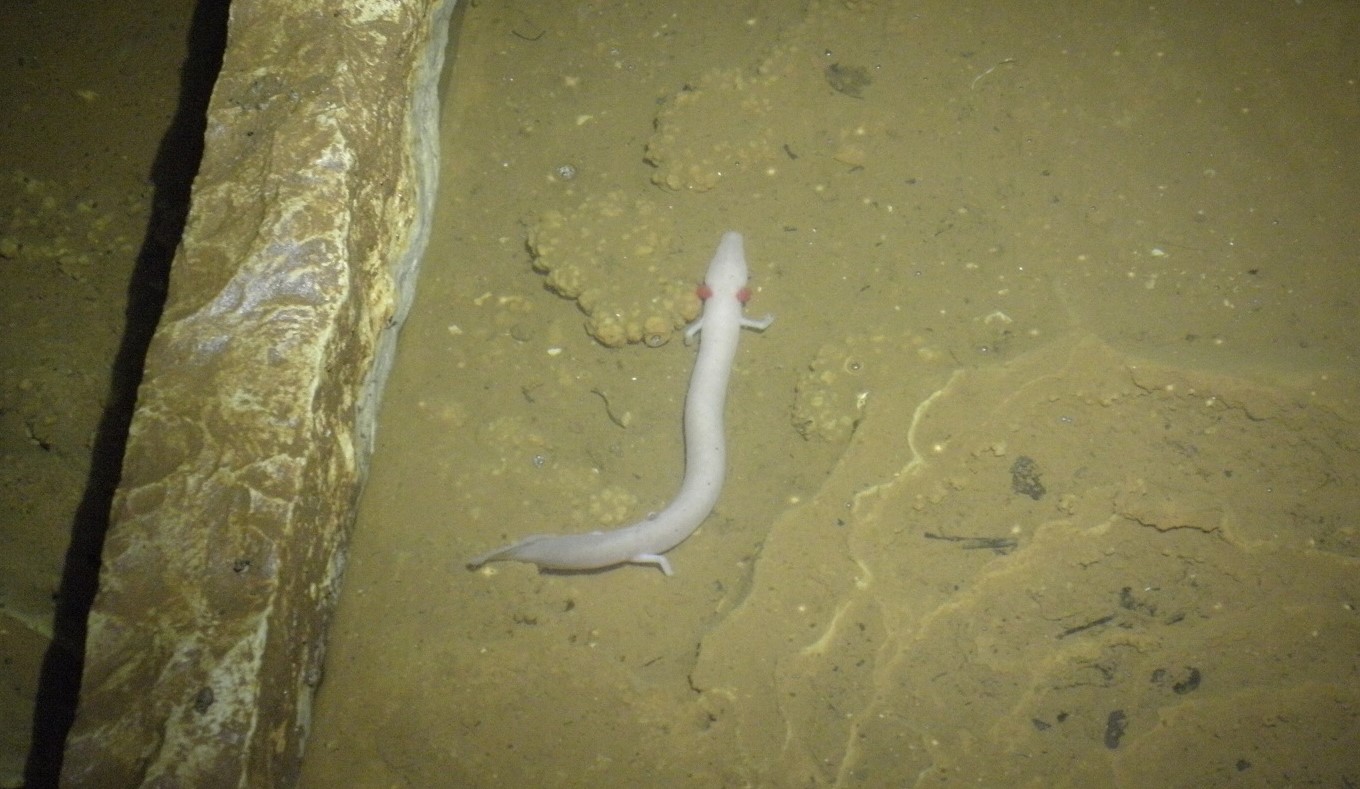
Human fish in the Baredine Cave near Poreč, Istria / Donatella Pauković
If you want to get the best from water experience, near the tourist resort Zelena Laguna in Poreč, you can enjoy the largest Croatian water amusement park – Aquacolors Poreč. Also, the attractive Aquapark Istralandia, recently named fourth best water park in the world, is only a 20-minute drive from Poreč.
If you want to learn something about astronomy, the Višnjan Observatory, one of the 12 most productive observatories in the world of all time, is 16 kilometers away from Poreč. During 2018 and 2019, the Observatory discovered and documented over 1,400 asteroids, and recently, as part of a crowdfunding campaign, they secured funding for further investment in scientific and educational facilities.
Conclusion: Is Porec in Croatia worth visiting?
Suppose you want to have active holidays, then yes. In that case, Poreč is worth visiting because it offers a combination of lovely beaches, city sights, beautiful sunsets, rich culture, numerous sports and adventure activities, great food, and even a great nightlife. Poreč simply has it all.
I have visited Poreč countless times in winter when it turns into a quiet town without tourists, and I would always rejoice to see some pizzerias, restaurants, and cafes open even during the winter. Poreč is also a host to many sports teams during winter, who do the preparations for sports competitions in six Poreč sports halls. Did you know that Poreč will soon even have a football camp? It is the result of a long-term investment in sports in Poreč.

Poreč Tourist Board
It is fascinating to me how every Croatian city and place hides many interesting facts, and sometimes it is challenging to discover them all in one visit. Therefore, I know there is a lot more to do and see in Poreč, and I can't wait to revisit it.
Although I have traveled a large part of the Croatian coast in my 24 years and the mainland, I think there is always something new to explore in Croatia, and I'm looking forward to finding out more about my beautiful country in the future.
To follow the People Also Ask Google about Croatia series, click here.
Museum of Illusions Opens in New Delhi
ZAGREB, 21 February, 2021 - Five years since the opening of the first Museum of Illusions in Zagreb, 30 franchises have been opened around the world, including the latest one in New Delhi, which was opened this month.
The museum said 2020 was a challenging year but that it still managed to "increase our family by as many as nine new members, and the New Delhi Museum of Illusions is our 30th member."
The international brand whose original concept was launched in Zagreb is present in cities such as New York, Paris, Shanghai, Dubai, Chicago, Madrid, Istanbul, Athens, Berlin, and Kuala Lumpur.
The latest franchise in New Delhi is a continuation of the successful path of a unique tourism and education project which arouses interest with each new display, as a result of which new museums are opened.
The Museum of Illusions is aimed at all age groups. It is interesting to both children and adults as it combines entertainment and education. It is a place where visitors can try to resist gravity in the Anti-gravity Room, see their friend, partner or teacher shrink or grow right before their eyes, lose themselves in the mirrors of the Infinity Room, serve someone's head on a platter or climb to the ceiling in the Rotated Room.
The museum also has a large collection of holograms and many optical illusions and installations. A team of architects is working on new exhibits and brain teasers which play with human perception.
For the latest news in the Museum of Illusions expansion story, follow the dedicated TCN section.
Croatian Papuce Obsession: Latest Photo Shows Snow No Obstacle
February 21, 2021 – A popular photograph of trailblazing Dalmatian winter wear has caused bewilderment and hilarity this week. What lasting impact could this innovation have on Croatian papuce obsession and just what in the name of Nike are we looking at??
With most of Croatia having enjoyed a warm and sunny late February weekend, it's easy to forget that snow still lingers in some places. Or, it certainly seemed to last week, when this baffling and funny photo became popular online. The image clearly shows that, whatever the weather, some people are reluctant to wear anything other than their Croatian papuce.
The photo was posted last week on the Dnevna doza prosječnog Dalmatinca Facebook page, where it became a big hit. Titled simply 'Dalmatinske buce', the photo so far got 3.7 thousand 'likes'. Some 725 comments were left by those puzzled or amused by the strange combination of footwear for the setting.
Quite how to describe this bewildering concoction of unsuitable outdoor winter wear left TCN confused. Obsession with Croatian papuce comes as naturally to those who live in Croatia as exhaling after inhaling. But, it is a strange and alien beast to many from North America, Australia and western Europe.
Croatian papuce are essentially slippers which you are invited to wear when you enter a Croatian home. Every. Croatian. Home. It's a simple rule. You cannot refuse. Don't try and argue the case for keeping your shoes on – that would be extremely rude. Thought that today you'd get away with wearing that pair of socks with a hole in the toe? Wrong. You're in Croatia now. The indelible embarrassment you are about to suffer is a necessary scar from which you will learn. There is no avoiding the Croatian papuce. Just put them on.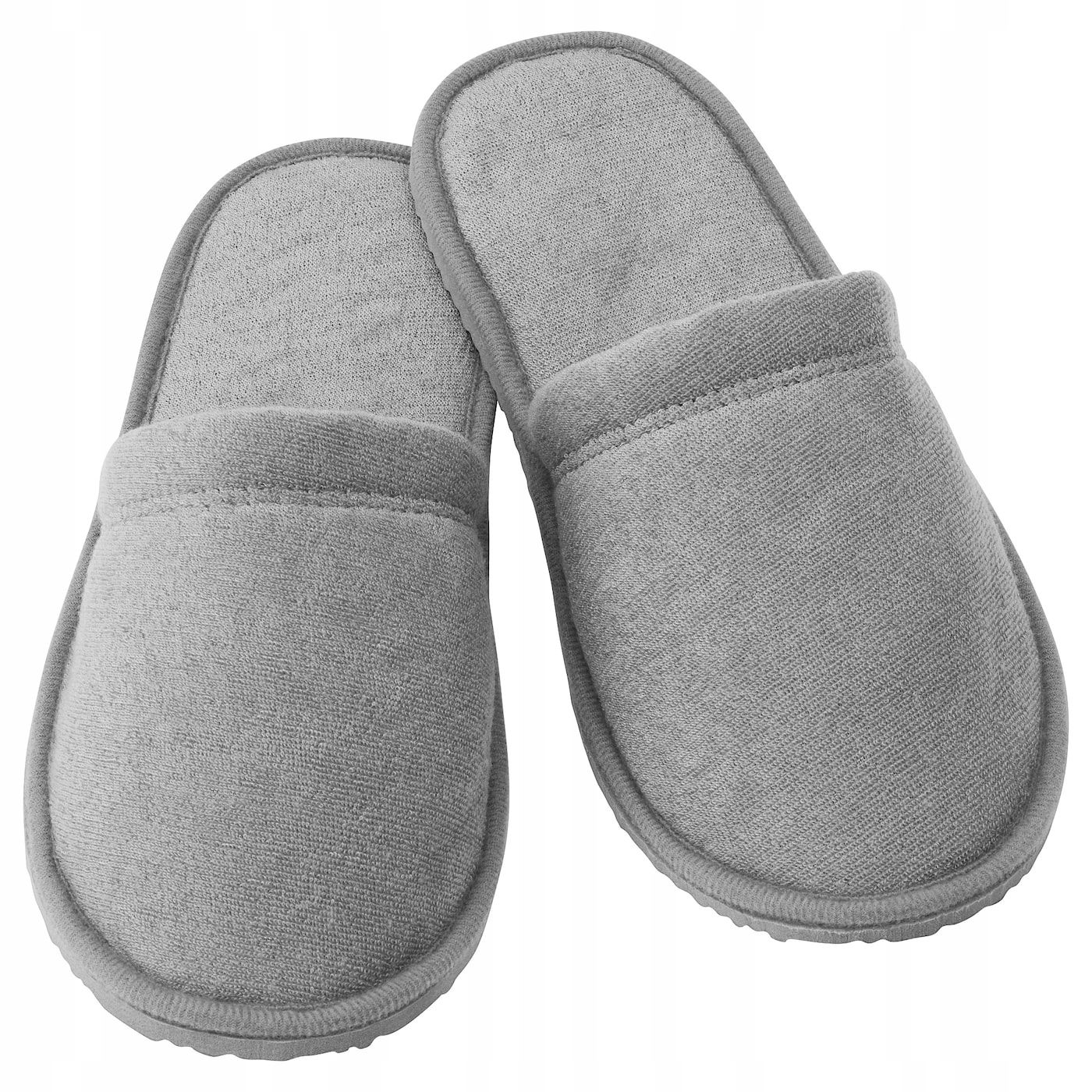 Croatian papuce © IKEA
Croatian papuce © IKEA
When you are offered Croatian papuce, if your host is kind enough to be speaking English with you, they may not introduce them to you as slippers. They may often be referred to as 'house shoes'. That's because, unlike the shoes you wore upon entering, Croatian papuce are usually never worn out of the house. The wearing of Croatian papuce ensures that any dirty stuff on the bottom of your shoes is not traipsed through your kind host's home. And, they are lighter than your boots on the expensive carpet that your host would like to preserve. However alien and unnerving the process of placing Croatian papuce on your feet may seem - if something similar is not part of your culture - this is actually the part that is easy for anyone to understand and abide by. Go with it. You must. You don't really have any choice. Unless you want to stay outside. You never know, you might even like it. Some Croatian papuce are actually rather nice (not that the wearing of Croatian papuce is at all about you).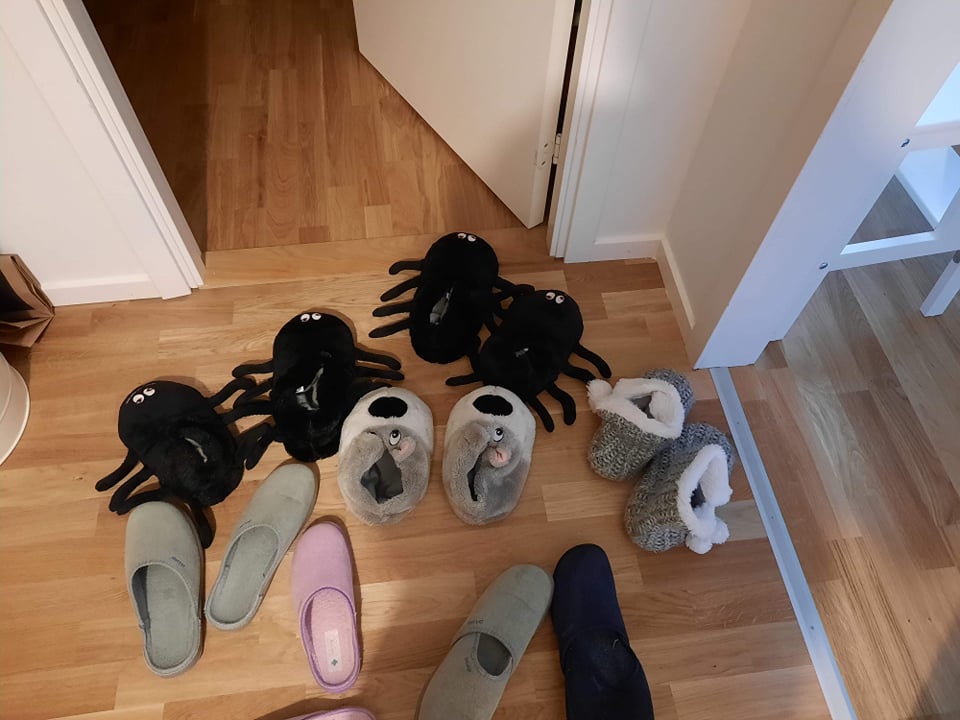 A relatively small number of Croatian papuce, ready to greet some lucky guest(s). Only two people live in this apartment. It's like when ancient armies would march in single file to disguise their numbers - no burglar would dream of breaking into a home with this many tenants. Clever hallway papuce placement.
A relatively small number of Croatian papuce, ready to greet some lucky guest(s). Only two people live in this apartment. It's like when ancient armies would march in single file to disguise their numbers - no burglar would dream of breaking into a home with this many tenants. Clever hallway papuce placement.
The Croatian papuce hallway introduction is delivered with a kind and warm heart because Croatians are generally very welcoming and great hosts. Nobody really knows if anything dangerous or life-threatening lies beyond the Croatian papuce hallway introduction should it be refused, because nobody has ever turned them down. Nobody living, anyway.
In order to fully prepare you for your first Croatian papuce hallway introduction, there are some things you should first know. Pay attention, because it gets a little more complicated from here and you may be left with more questions than answers about the snow-trekking Croatian papuce in the main photo if you don't keep up.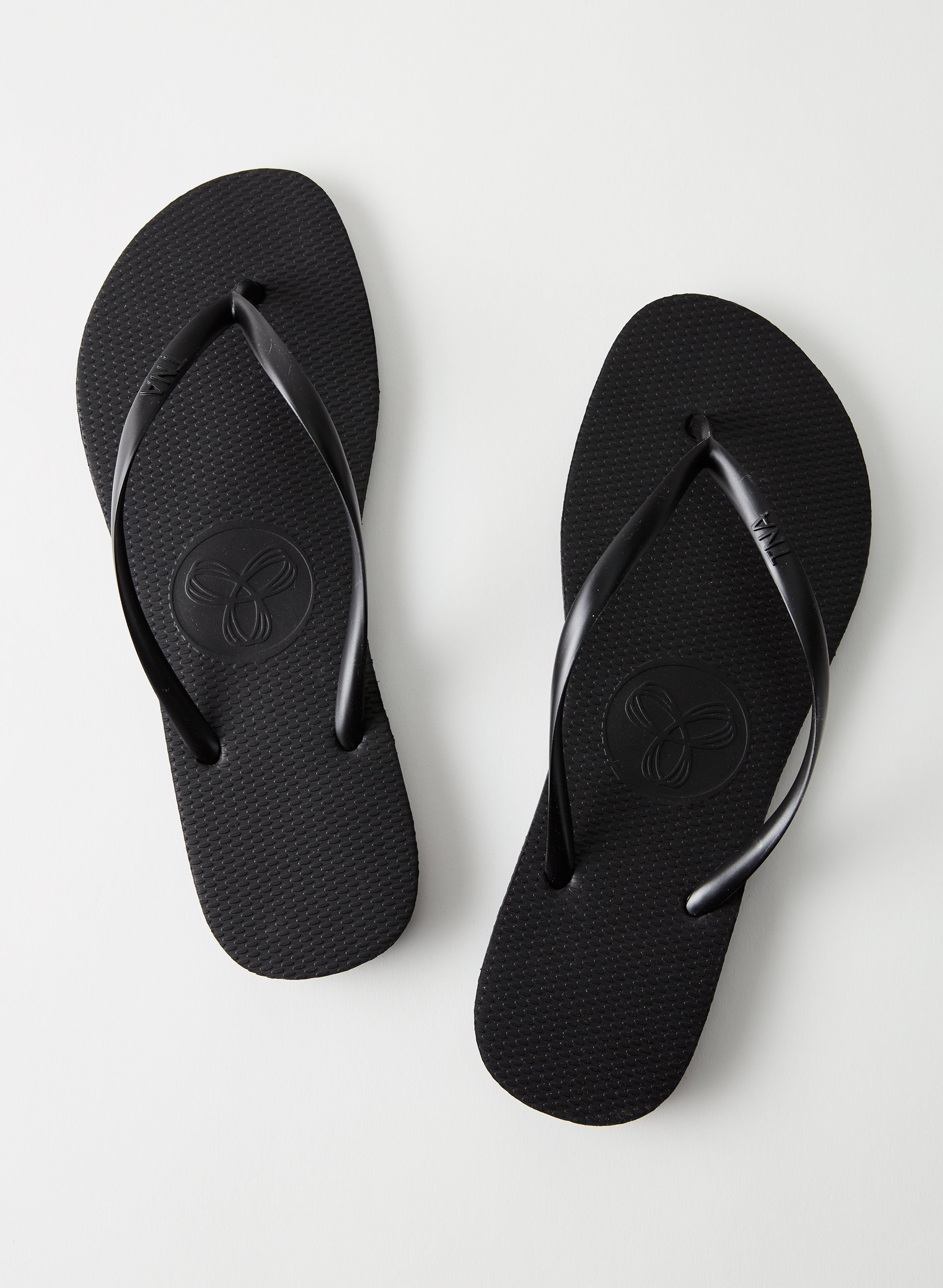 Flip-flops - they are NOT Croatian papuce
Flip-flops - they are NOT Croatian papuce
Not all papuče, or 'house shoes', are slippers. Some Croatian papuce are slippers. But, some are more like flip-flops. Except they are almost never the footwear westerners traditionally refer to as flip-flops. It is almost unheard of that, in the Croatian papuce hallway introduction, you would be asked to put between your toes into the strap of a traditional flip flop that someone else has previously worn. But, that's more because traditional flip-flops are outside shoes. This isn't about you, remember.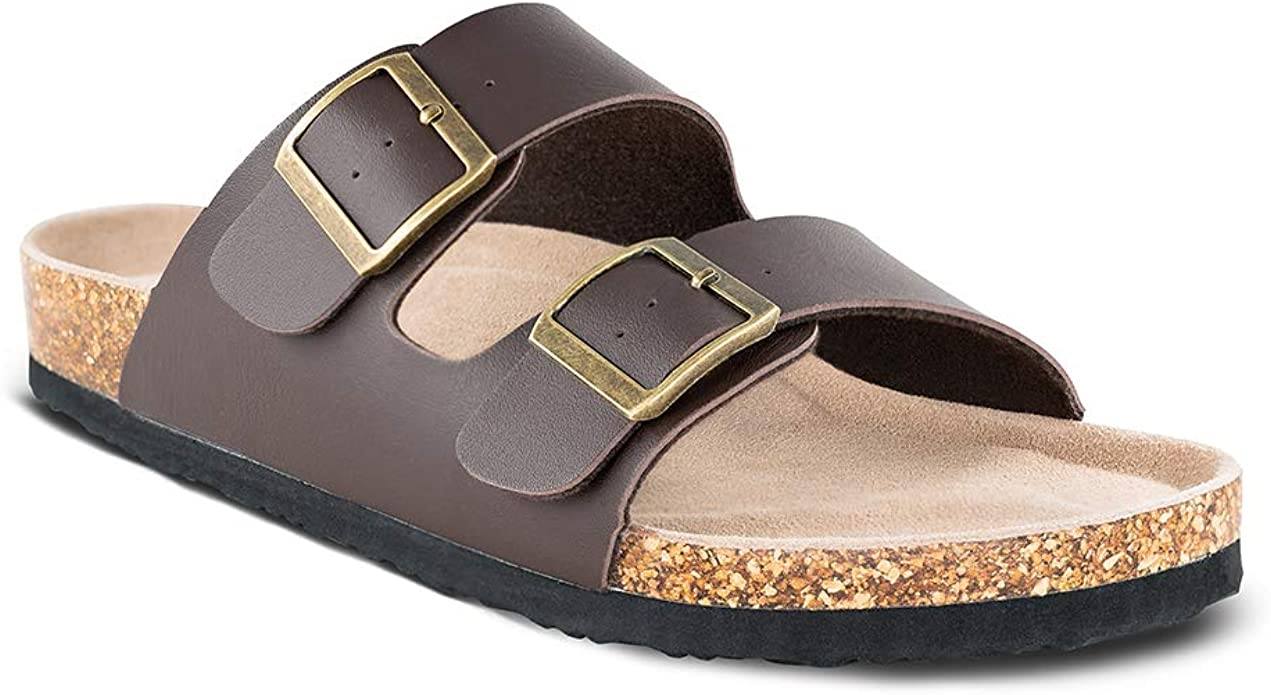 A more Birkenstock-type slip-on sandal could be considered a Croatian house shoe and offered to you. We say 'offered', but there's no choice involved
A more Birkenstock-type slip-on sandal could be considered a Croatian house shoe and offered to you. We say 'offered', but there's no choice involved
The flip-flops you are likely to meet in the Croatian papuce hallway introduction are more like a modern hybrid of a flip-flop and a sandal. With these, there is no inter-toe entanglement. The pictured lady in the snow is wearing these kinds of toe-liberated papuce. In Dalmatia, where we might well guess the picture was taken, these kinds of Croatian papuce are often referred to as šlape. Google translate says šlape are slippers. Lies. They're more like a sandal flip-flop hybrid. Their name is even relatable to flip flop – it's the sound the heel-less shoe makes when worn.
The šlape worn by the lady in the snow scene are much loved in this region. Various items of clothing and footwear featuring three stripes are massively popular all over the Slavic world. Croatian papuce with a design bearing three stripes is a match made in heaven. Her reticence in removing them, despite the wintery conditions, is perhaps more understandable when you appreciate the untold joy this union of essential cultural items delivers.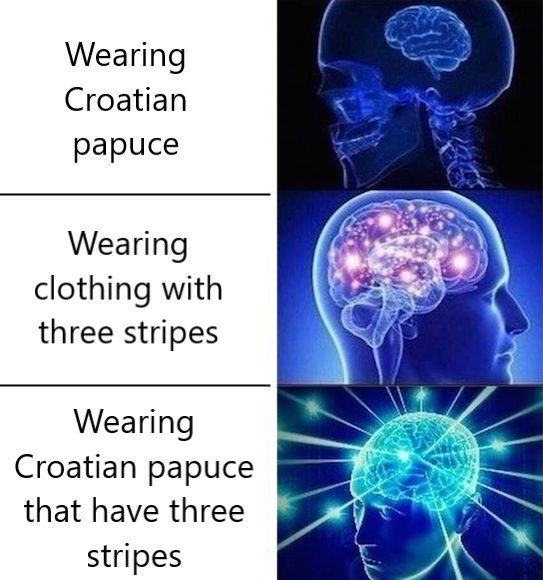
Although šlape are a hybrid of flips flops and sandals, you are unlikely to be offered either of these ancestors at the Croatian papuce hallway introduction. Sandals are outdoor shoes and, besides, the buckle is too fiddly for them to be appropriate for the Croatian papuce hallway introduction. You're supposed to easily slide into the transfer between outdoor shoe and Croatian papuce. It isn't supposed to be the ordeal many undergo the first time. Once you've thrown away all your socks with holes, the mental anguish will leave completely and on the next visit, you'll be slipping in and out of your Croatian papuce like an otter through the river flow.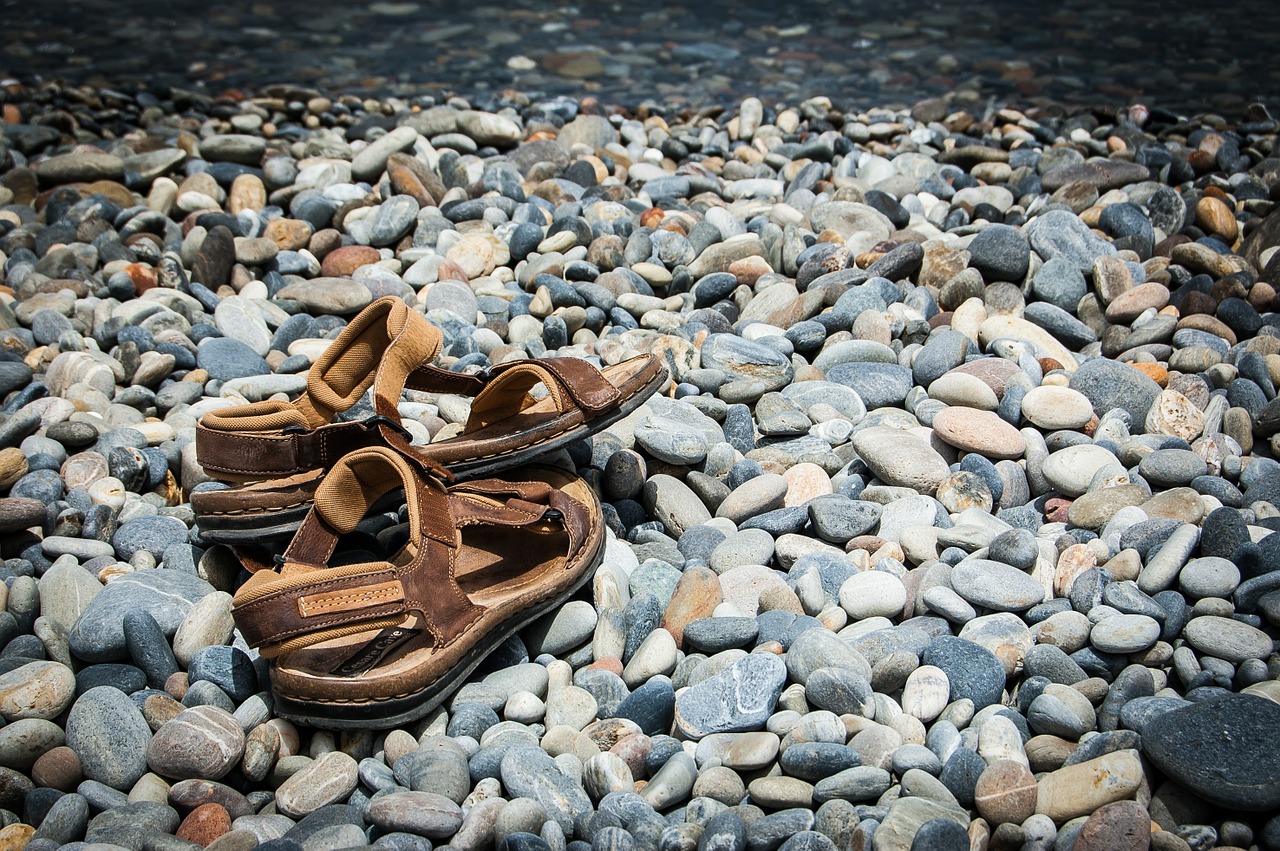 Sandals with fiddly fastenings or buckles are NOT Croatian papuce. You're supposed to glide gracefully between the footwear transition in Croatian hallways. these are outdoor shoes. Take them off!
Sandals with fiddly fastenings or buckles are NOT Croatian papuce. You're supposed to glide gracefully between the footwear transition in Croatian hallways. these are outdoor shoes. Take them off!
There are other types of house shoe that you may encounter in Croatia. One is Crocs. These may be referred to as papuče, but they are not really Croatian papuce. These are more like šlape, and can be worn as an indoor shoe or as an outdoor shoe, which is what we see in the picture. You might be offered them at the Croatian papuce hallway introduction. Own it.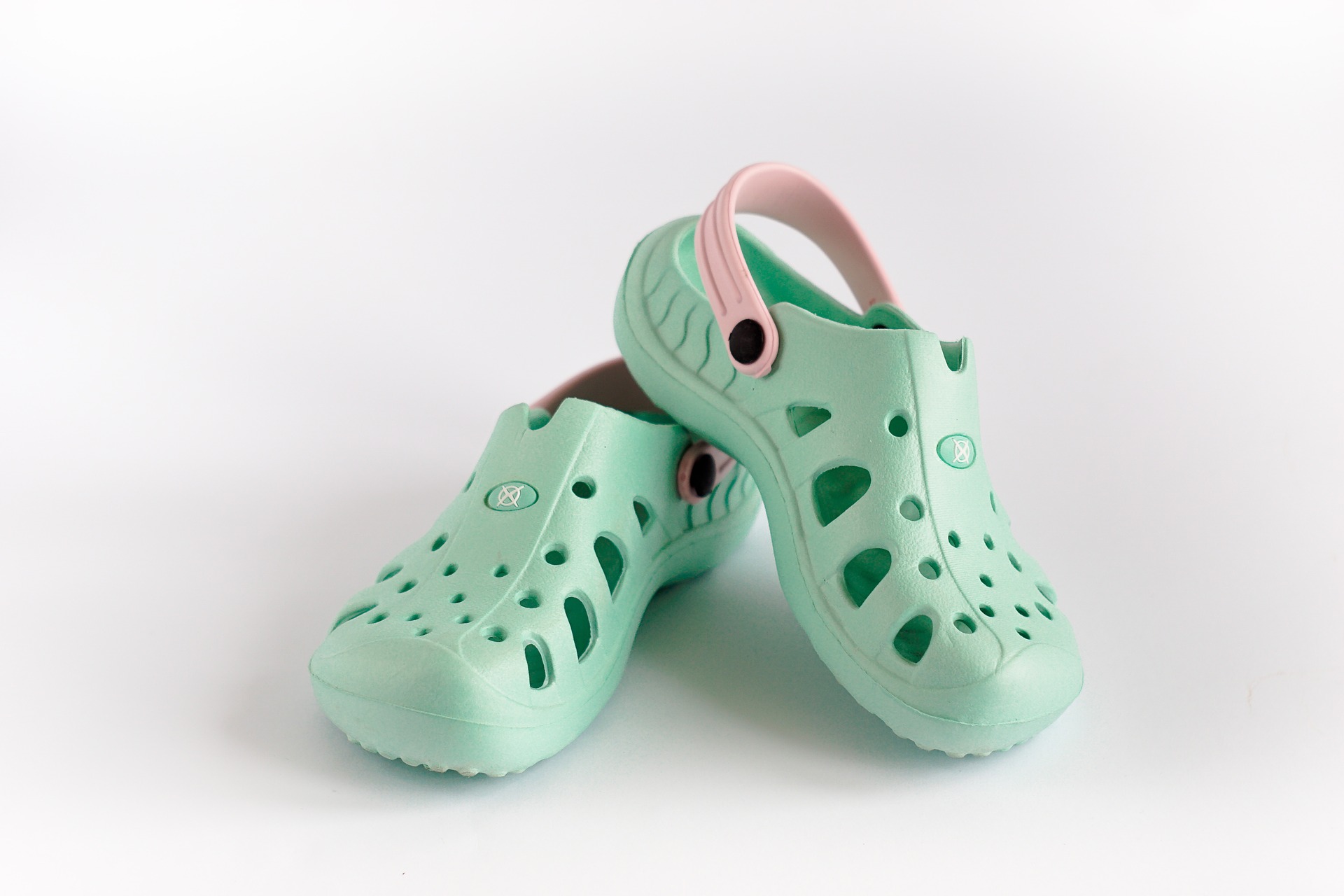 Oh no! But, oh yes. You must.
Oh no! But, oh yes. You must.
The other type of Croatian papuce you may see exist on a sliding scale, somewhere between woolly sock and furry indoor boot. The further into the scale you travel from either of these established forms of footwear, the further into hybrid territory you are entering. Almost every form of footwear on this scale is worn exclusively by the ladies and you are unlikely to ever be offered them, certainly not if you are a man. You might as well start untying your shoelaces right about now. There are around 10 different words for shoelaces in Croatia, depending on which region you're from
You might as well start untying your shoelaces right about now. There are around 10 different words for shoelaces in Croatia, depending on which region you're from
Whether the lady in the photograph is wearing underneath her šlape something that exists on this woolly sock-furry indoor boot scale depends on your perception and your knowledge of Croatian papuce. Could it really be said that she has ingeniously broken new grounds of winter-wear practicality by adding one set of Croatian papuce to another? Well, not only does the answer to that require a deep knowledge of Croatian papuce, but it also depends on the region you're from.
To ensure the highest standards of investigative journalism are maintained at Total Croatia News, we asked Croatians from many different regions, who live in several countries, to try and explain this picture of a possible future papuče phenomenon. TCN likes to keep on top of the latest trends.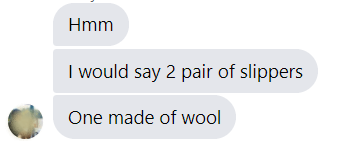 Thank you Osijek
Thank you Osijek Thank you island Brac
Thank you island Brac Thank you Slavonian diaspora in Scandinavia
Thank you Slavonian diaspora in Scandinavia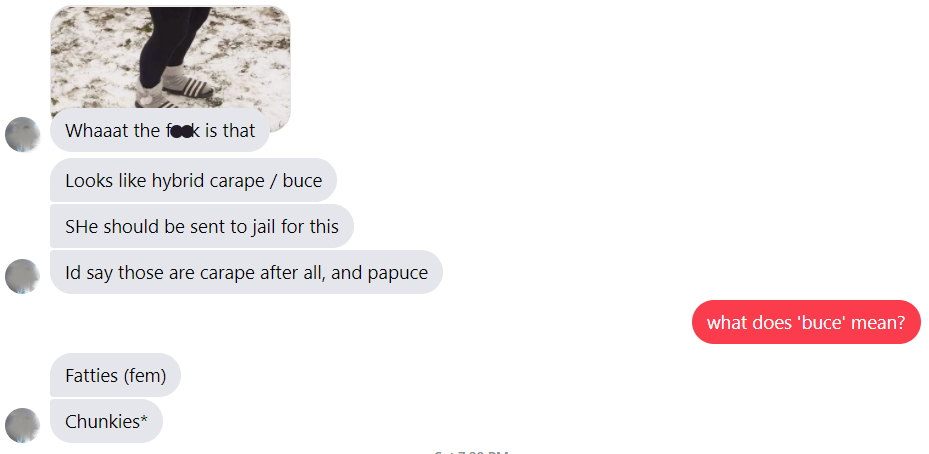 Thank you Mihaljevac, Zagreb
Thank you Mihaljevac, Zagreb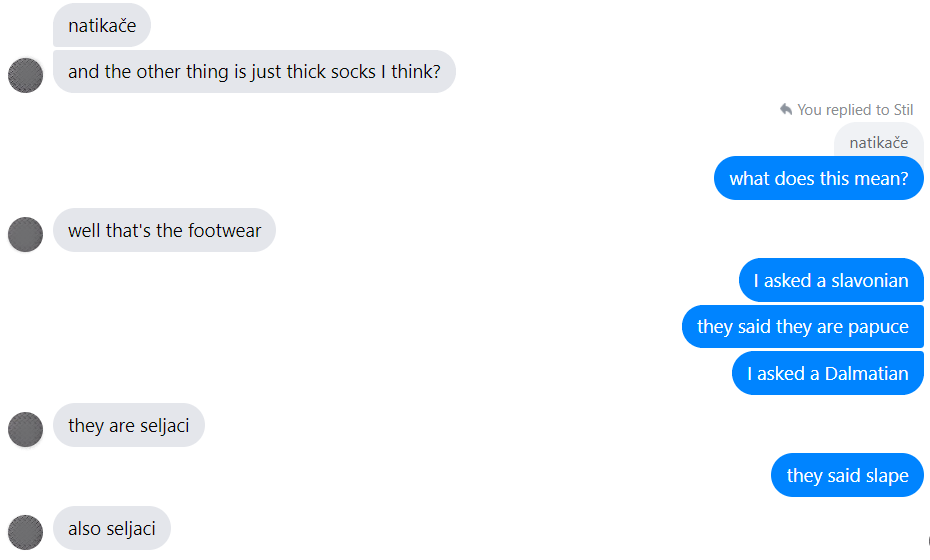 Thank you Frankopanska, Zagreb
Thank you Frankopanska, Zagreb
So, after several consultations, TCN was actually none the wiser. We still couldn't say for sure what we were looking at. 1) Standard Croatian papuce, or papuče with possible sock interloping, from Slavonians in Slavonia, Slavonians on Dalmatian islands and Slavonians in the diaspora 2) šlape, from Dalmatia and 3) two Purgers with different opinions - one who was unequivocal this was a sock and natikače combo (who would ever imagine someone from Zagreb believing they are ABSOLUTELY right?) Though brutal in their assessment of the validity of their countrymen's opinions, the latter view from Zagreb was later confirmed by another Purger (a 'Purger' is someone traditionally from, and with deep roots to Zagreb). But, just as soon as this new Zagreb contributor seemed to have cleared everything up, they then proceeded to send a major curveball into TCN's tireless journalistic pursuit for truth.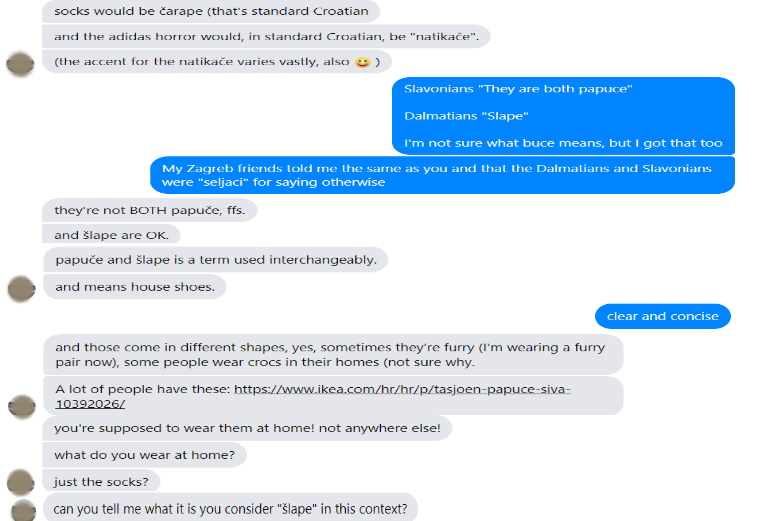

Are Croatian papuce a leftover from Ottoman invasion or a deeply-rooted pan-Slavic tradition?
Having narrowed down the options of just what the heck was being worn in the photo, we now faced the new dilemma of not knowing whether the Croatian papuce obsession is a leftover from the Ottomans or is a deeply routed pan-Slavic tradition. This caused considerable anguish. The entire history of Southeastern Europe's love of slippers was at stake. A consultation was therefore required from the wider Slavic world. We turned to friends from Poland, a Belarussian from Russia who lives in Serbia and a Lithuanian. Thank you Lithuania (you'll notice the word Slavic does not actually enter this discussion with a Lithuanian, because the friendship is valued)
Thank you Lithuania (you'll notice the word Slavic does not actually enter this discussion with a Lithuanian, because the friendship is valued)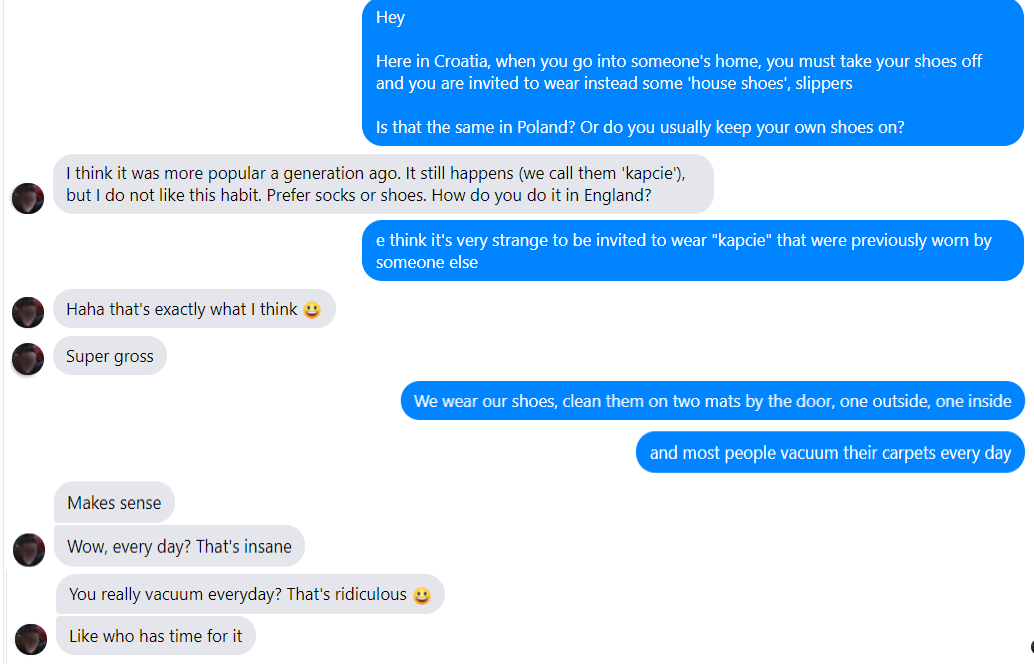 Thank you Polish friend number 1
Thank you Polish friend number 1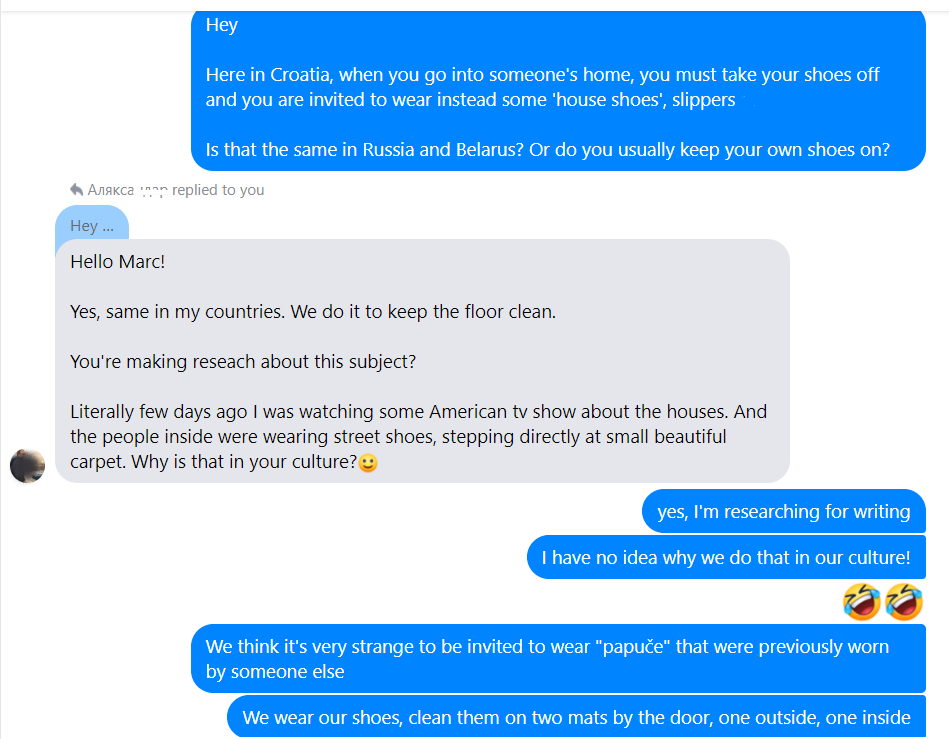 Thank you Belarussian friend in Serbia
Thank you Belarussian friend in Serbia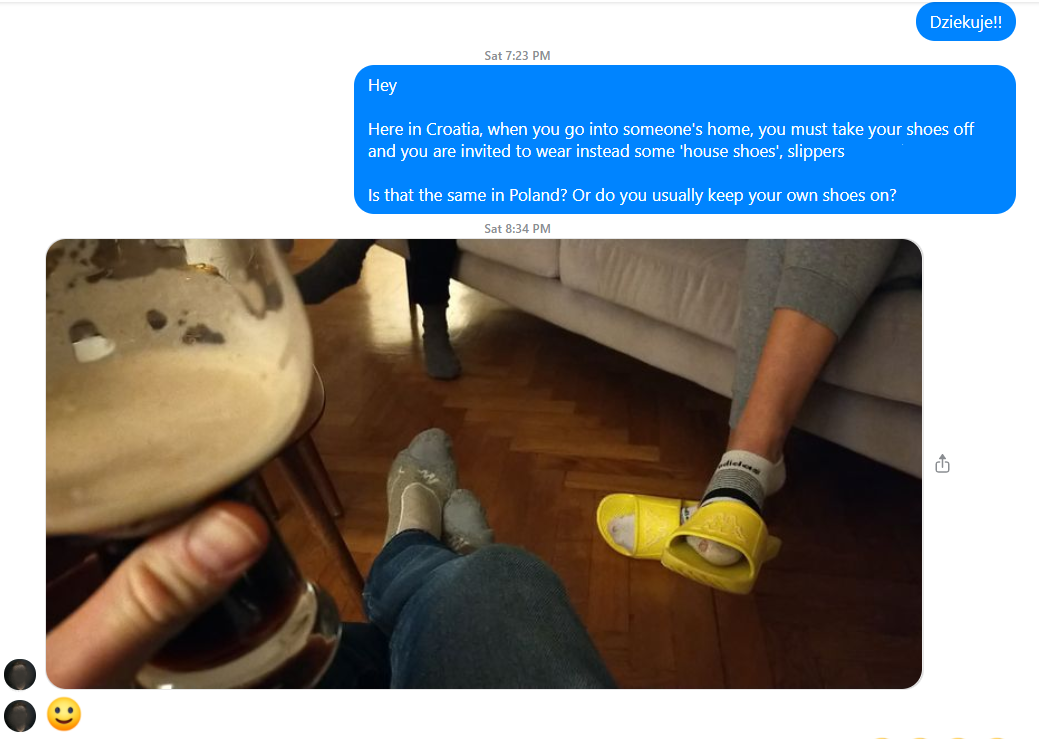 Thank you Polish friend number 2
Thank you Polish friend number 2
There you have it! Croatians can breathe easily and revel in their papuče love forevermore. Your papuče obsession is in your Slavic DNA, it is not a remnant of Turkish occupation. Phew! We sincerely hope this explosive revelation makes up for us not entirely being able to explain what the snow-shuffling Dalmatian lady is actually wearing on her feet.

For the latest travel info, bookmark our main travel info article, which is updated daily.
Read the Croatian Travel Update in your language - now available in 24 languages.
Twelve Candidacies for Zagreb Mayor Announced So Far
ZAGREB, 21 February, 2021 - So far 12 candidacies have been announced for the post of Zagreb Mayor, and in local elections set for May this year 11 candidates will try to remove from that post current Mayor Milan Bandić, who has been serving for more than 20 years and who will also run in the elections.
Despite the fact that he is burdened by scandals and ongoing trials, the 65-year-old Bandić announced his candidacy for his seventh term in office already during the campaign for parliamentary elections held in July 2020.
Among the first to announce his candidacy was the leader of the We Can! platform, Tomislav Tomašević.
His decision not to run in a coalition with the Social Democratic Party (SDP) put an end to plans for a united left bloc to nominate a joint mayoral candidate in an attempt to increase the chances of election victory and remove Bandić from power.
Tomašević said this would not be fair towards voters as in that case, there would be no negotiations that would affect the balance of power in the city assembly but that one would discuss the distribution of seats depending on the number of votes won.
Tomašević said that We Can! wanted to remove Bandić from power and prevent the formation of a coalition between him and the Croatian Democratic Union (HDZ) in the city assembly. By forming a progressive assembly, We Can! wants to accomplish its main goal - change the way Zagreb is run, which must be fair, transparent and sustainable, he said.
After negotiations between the HDZ and the temporary head of the Fund for the Post-Earthquake Reconstruction of Zagreb, Damir Vanđelić, failed, the HDZ nominated as its candidate for Zagreb Mayor Davor Filipović, a professor at the Zagreb Faculty of Economics, Zagreb City Assembly member and secretary of the HDZ branch in Zagreb.
Filipović advocates a successful reconstruction of the capital, a radical turnaround in the management of the city budget and transparent spending, with all expenses made public on the city administration's website.
He strongly dismisses the opposition's claim that he is "an alibi candidate of the HDZ" who actually wants Bandić to continue running the city. Since a large number of SDP and HDZ members are employed in the city's multi-utility conglomerate Zagreb Holding, many from the smaller opposition parties believe that Bandić's departure suits neither big party.
The Social Democratic Party (SDP) has nominated Joško Klisović, who also denied claims that he is an alibi candidate.
He announced that as mayor he would hold referendums on topics important for the city, strengthen governance in the city's administrative units so that residents could more clearly articulate their opinions, publish tenders on certain issues and use other creative methods to more involve citizens in local governance.
Independent city councillor and mayoral candidate Renato Petek warns that even though it charges the highest local taxes in the country, Zagreb is its most indebted town, "and that must change, so that residents of Zagreb could get better services for the money they pay into the city budget."
MP and Fokus party leader Davor Nađi, also to run for Zagreb mayor, has promised the abolishment of local taxes if elected.
Lower taxes, transparent operations and abolishment of jobs in Zagreb Holding which he considers were introduced to reward the mayor's political partners are some of Nađi's election promises.
MOST party candidate Zvonimir Troskot, who underlines his ten-year experience in the business sector, considers that financial literacy, knowledge of financial regulations and auditing, is the main attribute a mayoral candidate should have.
He has said that as mayor he will put emphasis on finance, auditing and debt management.
Also running for the position of mayor will be a former MP and former justice minister and presidential advisor, Vesna Škare Ožbolt, who believes that Zagreb should develop as a green, smart city, with emphasis on innovation and technology transfers serving to increase GDP.
The head of the Zagreb branch of the Croatian People's Party (HNS) and state secretary at the Construction Ministry, Željko Uhlir, said that his candidacy was prompted by the situation in the city, where 11 months after the earthquake no building has been reconstructed.
He noted that his vision of Zagreb's development was one of a green and smart city.
Uhlir also intends to deal with the city's burning problems such as transport, housing and infrastructure, reduce taxes on businesses and citizens, and launch a project to better utilise the potential of the River Sava in Zagreb.
The leader of the nonparliamentary party Democrats, Mirando Mrsić, who is a longtime doctor, director of the Ana Rukavina Foundation and former Social Democrat minister of labour and the pension system, has promised a fairer and safer Zagreb.
"We will reconstruct Zagreb after the earthquake and provide its citizens with a safe roof over their heads, we will revive the Institute of Immunology to fight the coronavirus pandemic and restore the spirit and values of Zagreb, which has been covered with a web a nepotism and corruption for years," Mrsić said.
The founder of the "Let's Reconstruct Zagreb" volunteer association of non-partisan experts and scholars, Marina Pavković, presented her candidacy saying that her campaign would focus on a strategic and project-based approach to change the face of the city.
Architect Otto Barić is also running for Zagreb mayor. He said that his candidacy was prompted primarily by the consequences of the earthquake that hit Zagreb and its environs in March 2020.
Petrinja Mayor: We will Present Distribution of Donations Transparently
ZAGREB, 21 February, 2021 - Petrinja Mayor Darinko Dumbović said at a forum in Petrinja on Saturday that the town authorities would transparently present the distribution of donations in a week, the "Petrinja Spring" initiative said.
At the forum, the head of the "Petrinja Spring" citizens' initiative, Drinka Mažić, prioritised the issues of adequately informing citizens, repairing earthquake damage, reconstructing the city, distributing donations and citizens exercising their rights, in accordance with the questions and comments that citizens have set as priority issues in the past three weeks when communicating with the "Petrinja Spring" initiative.
By the end of the month, a tender for the completion of the Zagreb-Sisak motorway, including a fast road to Petrinja, with a construction deadline of two years, will be published.
One of the questions that could be heard at the forum was when local children will be able to continue with normal schooling.
"That is one of the fundamental questions for the city's reconstruction and revitalisation since the lack of educational opportunities results in young people leaving Petrinja," it was said.
The "Petrinja Spring" citizens' initiative organised the forum to establish two-way communication between institutions in charge of the reconstruction of the city and the citizens.
"Petrinja Spring" is a citizens' initiative based on the idea of a fast, quality and efficient reconstruction of Petrinja. The values its actions are based on are community, responsibility and credibility.
The online forum was attended, among others, by representatives of the task force dealing with the aftermath of the 29 December earthquake in Sisak-Moslavina County, Mayor Darinko Dumbović and representatives of the initiative.
For more news on the Petrinja earthquake, follow the dedicated TCN section.
Croatia Reports 260 New COVID-19 Cases, 9 Deaths
ZAGREB, 21 February, 2021 - Croatia has recorded 260 new coronavirus cases and nine related deaths in the last 24 hours, the national coronavirus response team reported on Sunday morning.
The number of active cases currently stands at 2,371.
Among them are 789 infected people receiving hospital treatment, 72 of whom are on ventilators.
A total of 11,396 people are currently in self-isolation.
So far, a total of 1.3 million people have been tested, including 5,458 in the last 24 hours.
Since 25 February 2020, when the first coronavirus case was confirmed in Croatia, 239,945 people have contracted the novel virus, of whom 5,429 have died.
A total of 232,145 people have recovered, including 301 in the last 24 hours.
For the latest news on coronavirus in Croatia, follow the dedicated TCN section.
Zagreb: 16,000 Vaccine Doses Available to Elderly and Chronic Patients Next Week
ZAGREB, 21 February, 2021 - Next week, 16,000 doses of the COVID-19 vaccine should be distributed to family medicine clinics for the vaccination of persons over the age of 65 and chronic patients, the Dr Andrija Štampar Teaching Institute of Public Health said on Sunday.
About 85,000 citizens of Zagreb from that categroy have so far applied for vaccination, and the Institute says that the number continues to increase daily.
Vaccine to be administered in clinics and at 19 locations in city
Citizens will be vaccinated by about 400 medical teams, with 35% opting for getting vaccinated at their family doctor's offices, while others will get vaccinated at one of the 19 locations in the city, which are part of health institutions.
To date, 18,640 people in Zagreb have received the first dose, while 13,236 have received the second dose. Those are residents and employees at care homes, health workers and others employed in health care, members of emergency services and people on dialysis.
The Institute said that vaccination at locations outside health institutions would be organised once sufficient doses of the vaccine are available and once stage three of the vaccination process starts.
Vaccination to take place at two Zagreb Fair pavilions
In Zagreb, vaccination will be organised at two Zagreb Fair pavilions, like in other big European cities.
The director of the Croatian Public Health Institute, Krunoslav Capak, announced that 23,400 doses of the Pfizer vaccine should arrive in Croatia next week, as should 16,800 doses of the Moderna vaccine and 52,658 doses of the AstraZeneca vaccine.
On Friday, 33,000 doses of the AstraZeneca vaccine arrived, and by the end of March, a total of more than 700,000 doses should arrive if all producers meet their obligations.
For the latest on coronavirus in Croatia, check out the dedicated TCN section.
Olympic Qualifiers: Croatia Defeats Russia on Penalties to Qualify for Tokyo!
February 21, 2021 - Croatia defeats Russia on penalties in the 3rd-place match of the Olympic qualifying tournament in Rotterdam to qualify for Tokyo!
Croatia and Russia met in the 3rd-place match of the Olympic qualifying tournament in Rotterdam on Sunday afternoon. A win was enough for Croatia to automatically secure a spot in Tokyo, as the top three national teams from the qualifiers advance to the Olympic Games.
Behind Croatia are seven rounds made up of five victories and two defeats at the Olympic Qualifying tournament in Rotterdam thus far. Recall, Croatia won their first match against Romania at 16:6, defeated the Netherlands 25:8, topped France 10:13, lost to Russia 13:14, and beat Germany 22:8 in the final group stage match.
Croatia thus finished the group stage with eight points, four wins, and a defeat against Russia, which finished first with nine points.
In the quarterfinal match on Friday, Croatia was better than Georgia (15:6), but lost to Montenegro in the semifinal match on penalties on Saturday. Russia lost to Greece 10:13 in the second semifinal on Saturday.
Croatia v. Russia
Maro Jokovic scored the first goal of the match from a penalty for 1:0 with 6:49 to go in the first quarter. A Milos-Vrlic combo made it 2:1 for Croatia a minute later. Vukicevic made it 3:2 with 3:54 to go. Adro Buslje scored for 4:2 with less than 3 minutes left. The first quarter ended at 4:3.
Milos scored to open the second quarter for Croatia at 5:4. Vukicevic scored for 6:6 with 3:04 to go. It was 6:7 for Russia going into halftime.
Garcia scored for 7:7 with 6:17 left in the third quarter. Croatia finally retook the lead for 8:7 thanks to a Bukic goal with 2:55 left. Fatovic scored for 9:8 with 4:60 seconds to go in the third quarter.
It was 9:9 with 5:20 to go in the final quarter. Buslje scored for 10:9 with 4:47 left. Vrlic scored for 11:10 with 1:20 to go. The match ended at 11:11 and went to penalties, which Croatia won 25:24!
The finalists of the qualifying tournament, as well as the national team that wins the match for third place on February 21, qualifies for the Olympic Games in Tokyo, which are scheduled from July 24 to August 8, 2021.
To read more about sport in Croatia, follow TCN's dedicated page.


